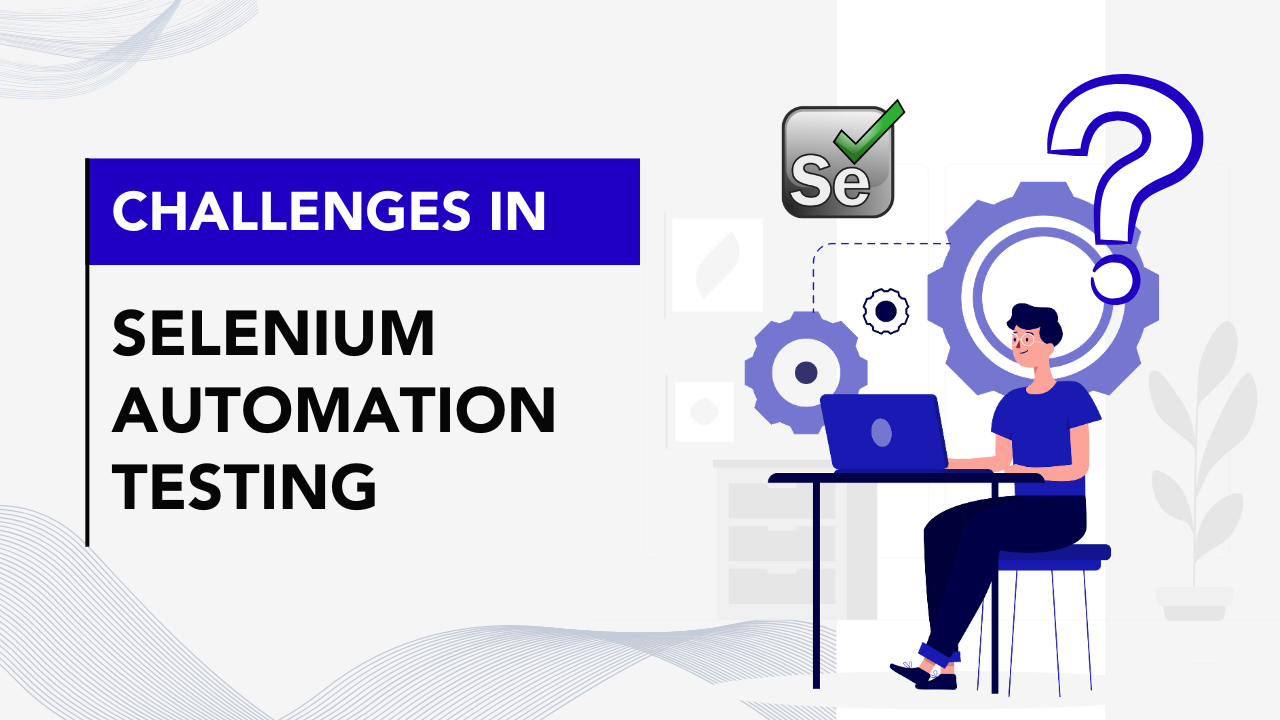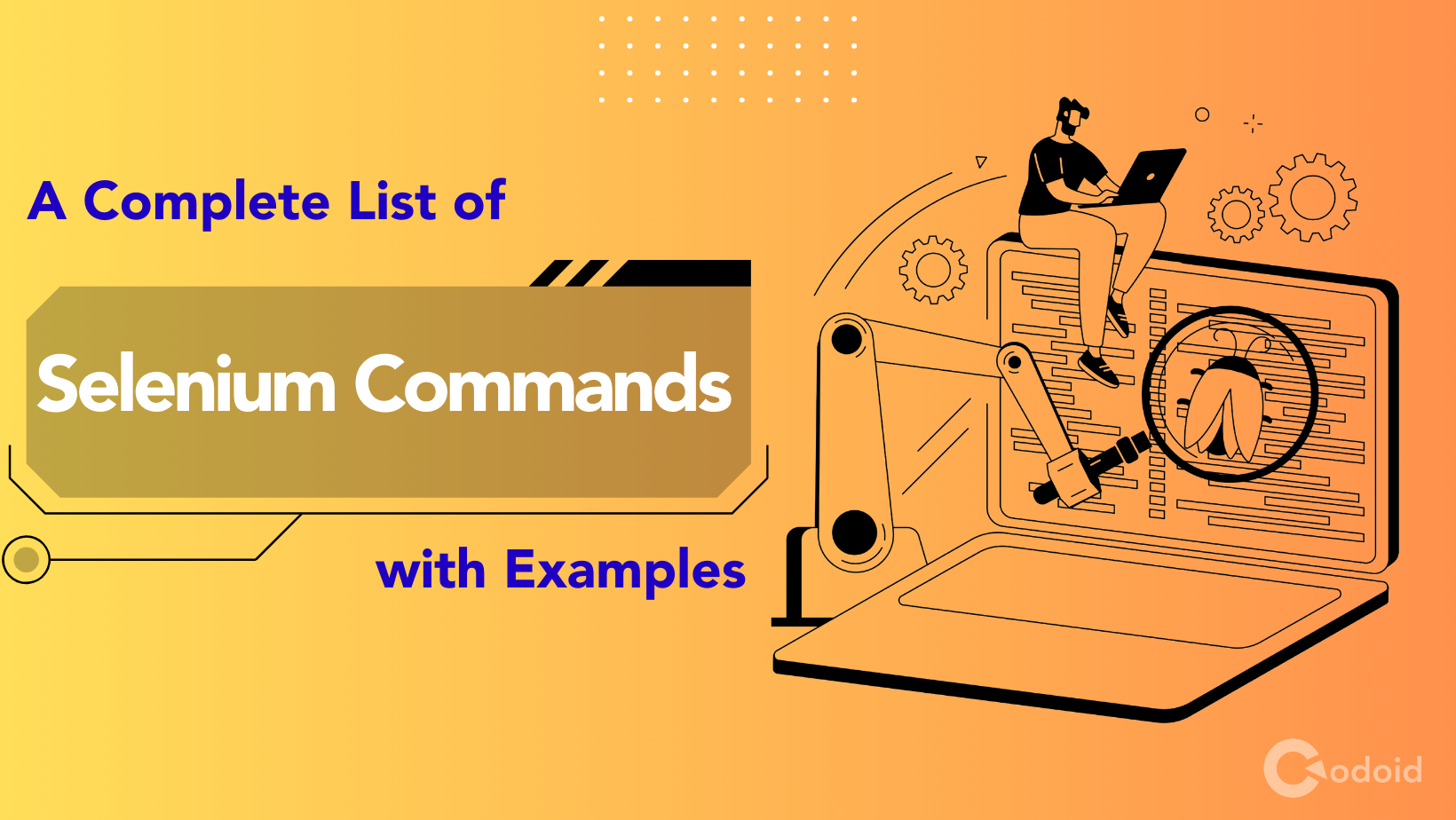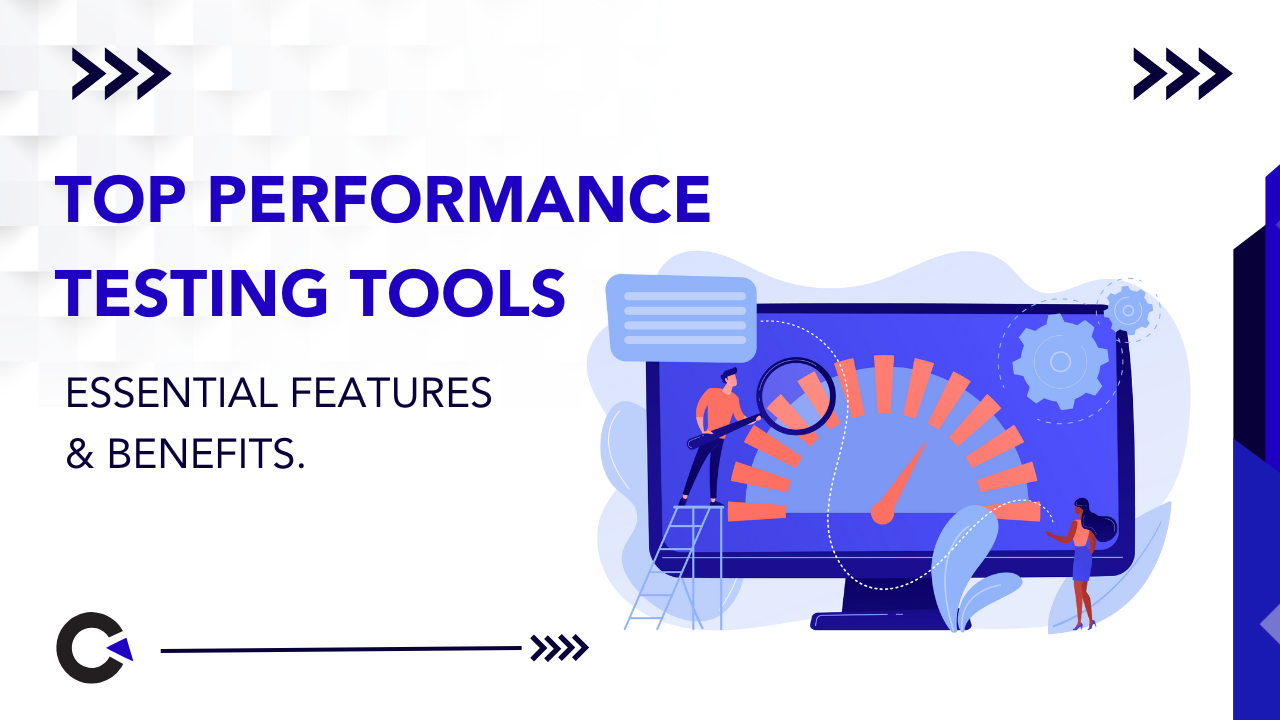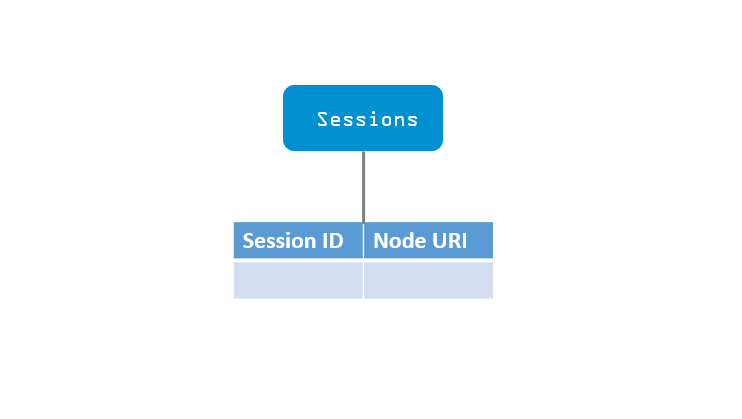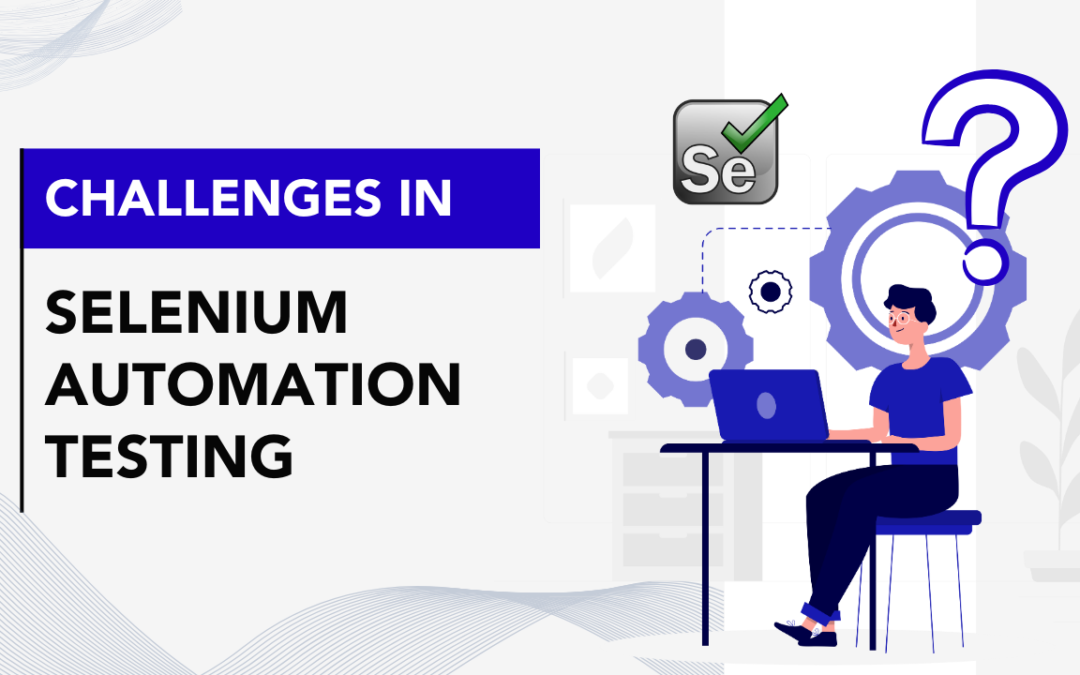
by Rajesh K | Apr 1, 2025 | Selenium Testing, Blog, Latest Post |
Automation testing is an integral part of modern software development, enabling faster releases and more reliable applications. As web applications continue to evolve, the demand for robust testing solutions has increased significantly. Selenium, a powerful and widely used open-source testing framework, plays a crucial role in automating web browser interactions, allowing testing teams to validate application functionality efficiently across different platforms and environments. However, while Selenium test automation offers numerous advantages, it also comes with inherent challenges in Selenium automation testing that can impact the efficiency,, stability, and maintainability of test suites. These challenges range from handling flaky tests and synchronization issues to managing complex test suites and ensuring seamless integration with CI/CD pipelines. Overcoming these obstacles requires strategic planning, best practices, and the right set of tools.
This blog post explores the most common challenges faced during Selenium test automation and provides practical solutions to address them. By understanding these difficulties and implementing effective strategies, teams can minimize risks, enhance test reliability, and improve the overall success of their Selenium automation efforts.
1. Flaky Tests and Instability
Flaky tests are those that can pass or fail unpredictably without any changes made to the application. This inconsistency makes testing unreliable and can lead to confusion in the development process.
Example Scenario:
Consider testing the “Proceed to Checkout” button on an e-commerce site. Occasionally, the test passes; at other times, it fails without any modifications to the test script or application.
Possible Causes:
1. Slow Page Load: The checkout page loads slowly, causing the test to attempt clicking the button before it’s fully rendered.
2. Rapid Test Execution: The test script executes actions faster than the page loads its elements, leading to interactions with elements that aren’t ready.
3. Network or Server Delays: Variations in internet speed or server response times can cause inconsistent page load durations.
Solutions to Reduce Flaky Tests
1. Identify & Quarantine Flaky Tests:
- Isolate unreliable tests from the main test suite to prevent them from affecting overall test stability. Document and analyze them separately for debugging.
2. Analyze and Address Root Causes:
- Investigate the underlying issues (e.g., synchronization problems, environment instability) and implement targeted fixes.
3. Introduce Retry Mechanisms:
- Automatically re-run failed tests to determine whether the failure is temporary or a real issue.
4. Optimize Page Load Priorities:
- Adjust the application’s loading sequence to prioritize critical elements like buttons and forms.
5. Regular Test Execution:
- Run tests frequently to identify patterns and potential flaky behavior.
2. Complex Synchronization Handling
In automated testing, synchronization ensures that the test waits for elements to load or become ready before interacting with them. If synchronization is not handled properly, tests can fail randomly.
Common Challenges:
1. Dynamic Content:
Some web pages load content after the page has already started, like product images or lists. If the test tries to click something before it’s ready, it will fail.
2. JavaScript Changes:
Modern apps often use JavaScript to change the page without fully reloading it. This can make elements appear or disappear unexpectedly, causing timing issues for the test.
3. Network Delays:
Sometimes, slow network connections or server delays can cause elements to load at different speeds. If the test clicks something before it’s ready, it can fail.
How to Handle Synchronization:
Explicit Waits:
- This is the best way to make sure the test waits until an element is ready before interacting with it. You set a condition, like “wait until the button is visible” before clicking it.
Implicit Waits:
- This tells the test to wait a set amount of time for all elements. It’s less specific than explicit waits but can be useful for general delays.
Retry Logic:
- Sometimes, tests fail due to temporary delays (e.g., slow page load). A retry mechanism can automatically try the test again a few times before marking it as a failure.
Polling for Changes:
- For elements that change over time (like loading spinners), you can set up the test to repeatedly check until the element is ready.
Wait for JavaScript to Finish:
- In JavaScript-heavy sites, make sure to wait until all scripts finish running before interacting with the page.
3. Steep Learning Curve for Beginners
A steep learning curve means beginners find it hard to learn something because it’s difficult or overwhelming at first. In automated testing, this happens when you’re learning complex tools and concepts all at once.
How to Make It Easier :
- Learn Programming Basics (variables, loops, functions)
- Start with Simple Frameworks (JUnit for Java, PyTest for Python)
- Use Version Control (Git for managing test scripts)
- Understand How WebDriver Works (locating elements, handling dynamic content)
- Learn Debugging (using logs and breakpoints to fix errors)
- Use Waits for Synchronization (explicit waits for elements, implicit waits for delays)
- Run Tests in Parallel (speed up testing with multiple browsers)
- Integrate with CI/CD (automate tests with Jenkins or GitLab CI)
4. Maintaining Large Test Suites
As your test suite grows, it becomes harder to manage due to frequent UI changes and redundant code.
Common Issues:
- When the UI changes, many tests that rely on specific buttons or fields may fail.
- When locators (like XPaths or CSS selectors) change, you need to update multiple tests, which is time-consuming.
- Without automated reports, it’s harder to track test results and failures.
Solutions:
Use Modular Design Patterns:
- Break tests into smaller parts (e.g., Page Object Model). This way, if an element changes, you only update it in one place, not across all tests.
Use Version Control and CI/CD:
- Version Control (Git): Keep track of changes to your test code and collaborate more easily.
- CI/CD Pipelines: Automatically run tests when code changes, ensuring your tests are always up-to-date.
Integrate Reporting Tools:
- Use tools like Allure or Extent Reports to automatically generate easy-to-read test reports that show which tests passed or failed.
Run Tests in Parallel:
- Use tools like Selenium Grid to run tests across multiple browsers at once, speeding up test execution.
5. Limited Native Support for Modern Web Features
Modern web apps often use dynamic loading, Shadow DOM, and JavaScript-heavy components, which Selenium struggles to handle directly.
Challenges in Selenium with Modern Web Features:
1. Dynamic Loading:
Many web pages load content dynamically using JavaScript, which means elements might not be available when Selenium tries to interact with them.
2. Shadow DOM:
The Shadow DOM encapsulates elements, making them hard to access with Selenium because it doesn’t natively support interacting with these hidden parts of the page.
3. JavaScript-Heavy Components:
Modern apps often rely heavily on JavaScript to manage interactive elements like buttons or dropdowns. Selenium can struggle with these components because it’s not built to handle complex JavaScript interactions.
4. Network Requests:
Selenium doesn’t have built-in tools for handling or intercepting network requests and responses (e.g., mocking API responses or checking network speed).
Solutions for Handling These Issues:
1. Use JavaScriptExecutor:
You can use JavaScriptExecutor in Selenium to run JavaScript code directly in the browser. This helps with handling dynamic or JavaScript-heavy components.
- Example: Trigger clicks or other actions that are hard to manage with Selenium alone.
2. Workaround for Shadow DOM:
Use JavaScriptExecutor to access the Shadow DOM and interact with its elements since Selenium doesn’t directly support it.
- Example: Retrieve the shadow root and then find elements inside it.
3. Use Puppeteer for Network Requests:
Puppeteer is a Node.js tool that works well with dynamic JavaScript and can handle network requests. You can integrate Puppeteer with Selenium to manage network conditions and API responses.
4. Headless Browsing:
Running browsers in headless mode (without the graphical interface) speeds up tests, especially when dealing with complex JavaScript or dynamic web features.
6. Scalability and Parallel Execution Challenges
Running multiple test cases simultaneously can significantly improve efficiency, but setting up Selenium Grid for parallel execution can be complex.
Challenges:
1. Configuration Complexity: Setting up Selenium Grid requires configuring multiple machines (or nodes) that interact with a central hub. This setup can be complex, especially when working with multiple browsers or environments.
2. Network Latency Between Hub and Nodes: When tests are distributed across different machines or environments, network delays can slow down the test execution. Communication between the Selenium Hub and its nodes can introduce additional latency.
3. Cross-Environment Inconsistencies: Running tests on different environments (e.g., different browsers, operating systems) can lead to inconsistencies. The tests might behave differently depending on the environment, making it harder to ensure reliability across all scenarios.
Solutions:
1. Use Cloud-Based Services: Instead of setting up your own Selenium Grid, use cloud-based services like BrowserStack or Sauce Labs. These services provide ready-to-use grids that allow you to run tests on multiple browsers and devices without worrying about setting up and maintaining your own infrastructure.
- Example: BrowserStack and Sauce Labs offer cloud infrastructure that automatically handles network latency and environment management, making parallel test execution easier.
2. Optimize Test Execution Order: To reduce bottlenecks in parallel test execution, carefully plan the test execution order. Prioritize tests that can run independently of others and group them by their dependencies. This minimizes waiting time and ensures that tests don’t block each other.
- Example: Run tests that don’t depend on previous ones in parallel, and sequence dependent tests in a way that they don’t block others from executing.
7. Poor CI/CD Integration Without Additional Setup
Integrating Selenium into CI/CD pipelines is crucial for continuous testing, but it requires additional setup and configurations.
Challenges:
1. Managing Browser Drivers on CI Servers: In a CI/CD environment, managing browser drivers (e.g., ChromeDriver, GeckoDriver) on CI servers can be a hassle. Different versions of browsers may require specific driver versions, and updating or maintaining them manually adds complexity.
2. Handling Headless Execution: Headless browsers are essential for running tests in CI/CD pipelines without the need for a graphical interface. However, configuring headless browsers to run properly on CI servers, especially when dealing with different environments, can be tricky.
3. Integrating Test Reports with Build Pipelines: Without proper integration, test results might not be easy to access or analyze. It’s important to have a smooth flow where test reports (e.g., from Selenium tests) can be integrated into build pipelines for easy tracking and troubleshooting.
Solution:
- Use WebDriverManager to manage browser drivers on CI servers automatically.
- Run browsers in headless mode to speed up test execution.
- Integrate test reports like Allure or Extent Reports into the build pipeline for easy access to test results.
- Use Docker containers to ensure consistent test environments across different setups.
8. No Built-in Support for API Testing
Selenium is great for UI testing, but it doesn’t support API testing natively. Modern applications require both UI and API tests to ensure everything works properly, so you need to use additional tools for API testing, which can make the testing process more complicated.
Impact of the Limitation:
1. Separate Tools for API Testing:
- You need tools like Postman or RestAssured for API testing, which means using multiple tools for different types of tests. This can create extra work and confusion.
2. Fragmented Testing Process:
- Having to use separate tools for UI and API testing makes managing and tracking results harder. It can lead to inconsistent test strategies and longer debugging times.
Solutions:
1. Use Hybrid Frameworks for Both API and UI Testing:
Combine Selenium with an API testing tool like RestAssured in one testing framework. This allows you to test both the UI and the API together in the same test suite, making everything more streamlined and efficient.
2. Use Tools Like Cypress or Playwright:
Cypress and Playwright are modern testing tools that support both UI and API testing in one framework. These tools simplify testing by allowing you to test the front-end and back-end together, reducing the need for separate tools.
9. Handling Browser Compatibility Issues
Selenium supports various browsers, but browser compatibility issues can lead to discrepancies in how tests behave across different browsers. This is common because browsers like Chrome, Safari, and Edge may render pages differently or handle JavaScript in slightly different ways.
Issues:
1. Scripts Fail on Different Browsers:
- A script that works perfectly in Chrome might fail in Safari or Edge due to differences in how each browser handles certain features or rendering.
2. Cross-Browser Rendering Inconsistencies:
- The appearance of elements or the behavior of interactive features can differ from one browser to another, leading to inconsistent test results.
Solutions:
1. Test Regularly on Multiple Browsers Using Selenium Grid:
- Set up Selenium Grid to run tests across different browsers in parallel. This allows you to test your application in multiple browsers (Chrome, Firefox, Safari, Edge, etc.) and identify browser-specific issues early.
- Selenium Grid lets you distribute tests to different machines or environments, ensuring you cover all target browsers in your testing.
2. Implement Browser-Specific Handling:
- In cases where browsers behave very differently (e.g., handling certain JavaScript features), you can add browser-specific logic in your tests. This ensures that your tests work consistently across browsers, even if some need special handling.
10. Dependency on Third-Party Tools
To achieve comprehensive automation with Selenium, you often need to integrate it with various third-party tools, which can increase the complexity of your test setup. These tools help extend Selenium’s functionality but also add dependencies that must be managed.
Dependencies Include:
1. Test Frameworks: Tools like TestNG, JUnit, and Pytest are needed to organize and execute tests.
2. Build Tools: Maven and Gradle are often required for dependency management and to build and run tests.
3. Reporting Libraries: Libraries like ExtentReports and Allure are used to generate and manage test reports.
4. Grid Setups or Cloud Services: For parallel execution and scaling tests, tools like Selenium Grid or cloud services like BrowserStack or Sauce Labs are used.
Conclusion
While Selenium remains a powerful automation tool, its limitations require teams to adopt best practices, integrate complementary tools, and continuously optimize their testing strategies. By addressing these challenges with structured approaches, Selenium can still be a valuable asset in modern automation testing workflows. Leading automation testing service providers like Codoid specialize in overcoming these challenges by offering advanced testing solutions, ensuring seamless test automation, and enhancing the overall efficiency of testing strategies.
Frequently Asked Questions
-
What are the biggest challenges in Selenium automation testing?
Some of the key challenges include handling dynamic web elements, flaky tests, cross-browser compatibility, pop-ups and alerts, CAPTCHA and OTP handling, test data management, and integrating tests with CI/CD pipelines.
-
How do you handle dynamic elements in Selenium automation?
Use dynamic XPath or CSS selectors, explicit waits (WebDriverWait), and JavaScript Executor to interact with elements that frequently change.
-
What are the best practices for cross-browser testing in Selenium?
Use Selenium Grid or cloud-based platforms like BrowserStack or Sauce Labs to run tests on different browsers. Also, regularly update WebDriver versions to maintain compatibility.
-
Can Selenium automate CAPTCHA and OTP verification?
Selenium cannot directly automate CAPTCHA or OTP, but workarounds include disabling CAPTCHA in test environments, using third-party API services, or fetching OTPs from the database.
-
How do you manage test data in Selenium automation?
Use external data sources like CSV, Excel, or databases. Implement data-driven testing with frameworks like TestNG or JUnit, and ensure test data is refreshed periodically.
-
What are the essential tools to enhance Selenium automation testing?
Popular tools that complement Selenium include TestNG, JUnit, Selenium Grid, BrowserStack, Sauce Labs, Jenkins, and Allure for test reporting and execution management.

by admin | Oct 28, 2019 | Selenium Testing, Blog, Top Picks |
As we all are aware of the fact that, Selenium 4 has not been released yet. However, three alpha versions have been released. Selenium Grid has only two components Hub and Node. On the other hand in Selenium Grid 4, we have four components namely – Router, Sessions Map, Distributor, and Node. Selenium 4 has introduced new architecture for Grid. Let’s understand how Selenium Grid 4 works with the three new processes.
Step #1-Start Sessions Map
Download selenium-server-4.0.0-alpha-2.jar & Chrome Driver in a folder and run the below command to start Sessions Map process.
java -jar selenium-server-4.0.0-alpha-2.jar sessions
What is Sessions Map? Session Map is one of the Selenium Grid Processes. Whenever a node/session is created, Node URI/Session ID gets stored in Sessions Map. Why it is getting stored here is another question. You will understand this at the last step.
Step #2-Start Distributor
Run the below command to start the distributor process.
java -jar selenium-server-4.0.0-alpha-2.jar distributor --sessions http://localhost:5556
All Selenium Grid nodes get attached under the Distributor process. If Selenium client code sends a create session request, then Distributor is responsible for assigning a node.
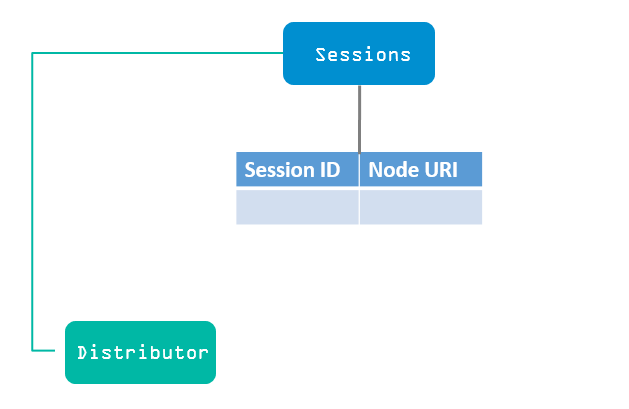
Step #3-Router Process
All the client requests will be received by Router. If the request is for creating a new session, then it will be redirected to the Distributor process. All other requests will be sent to the node associated with the request after querying the node URI from Sessions Map using the Session ID. Use the below command to start the router process.
java -jar selenium-server.jar router --sessions http://localhost:5556 --distributor http://localhost:5553
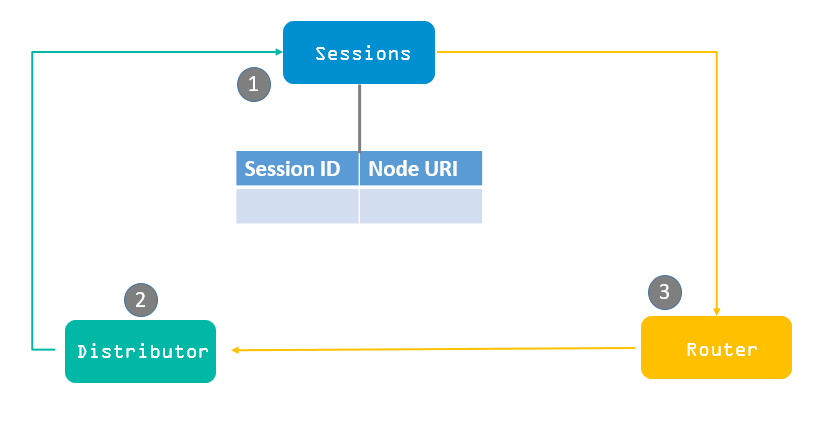
Step #4-Create a node
While creating a node, you do need to pass all the driver details. Drivers will get auto-detected if the exe/binary files are available in the folder where you have saved the Selenium Server jar file. Once the node is created under the distributor, the node details along with Node URI are updated in Session Map. For a thorough understanding, Please refer to the below diagram.
java -jar selenium-server-4.0.0-alpha-2.jar node --detect-drivers
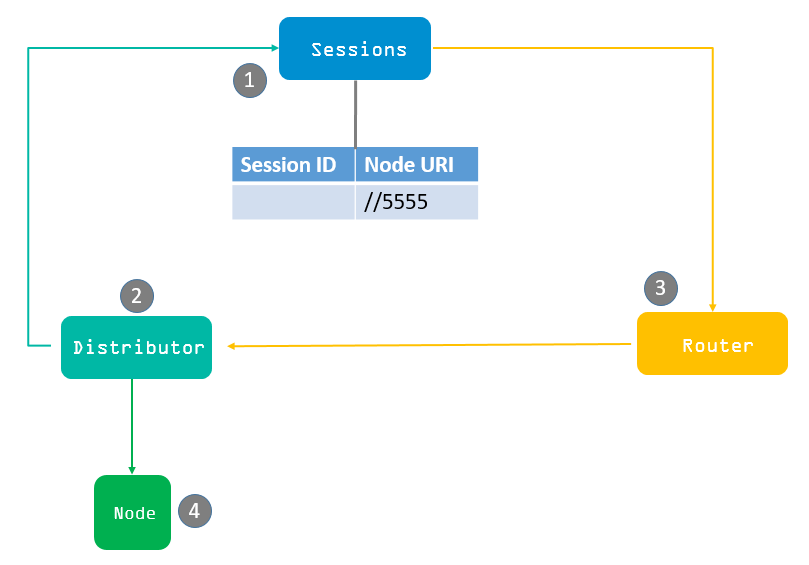
Step #5-Start a remote session
Invoke the remote webdriver which will send the creation request to router. Please note – Use http://localhost:4444. Not http://localhost:4444/wd/hub.
DesiredCapabilities capability = new DesiredCapabilities();
capability.setBrowserName("chrome");
RemoteWebDriver driver = new RemoteWebDriver(new URL("http://localhost:4444"),capability);
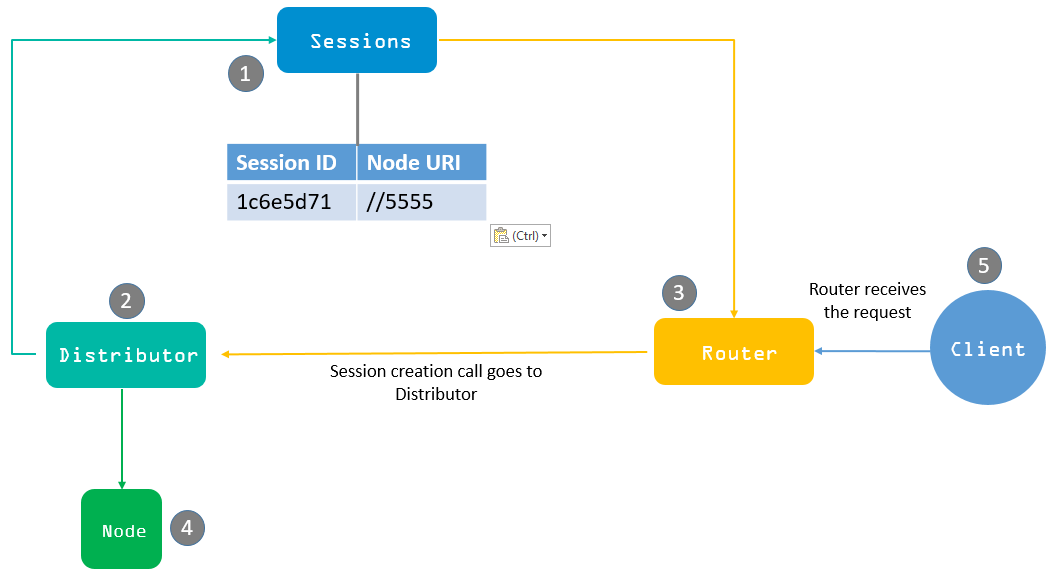
Once the session is created under the node, the session ID gets updated in the Session map for the node. So that Router can easily identify the node to send the other client requests directly.
Step #6-Router sends command to node
Apart from the session creation call, all other requests will be forwarded to Node from Router directly. Each client request has a Session ID. Using the session ID, the Router queries the Node URI
and finds the node which holds the session.
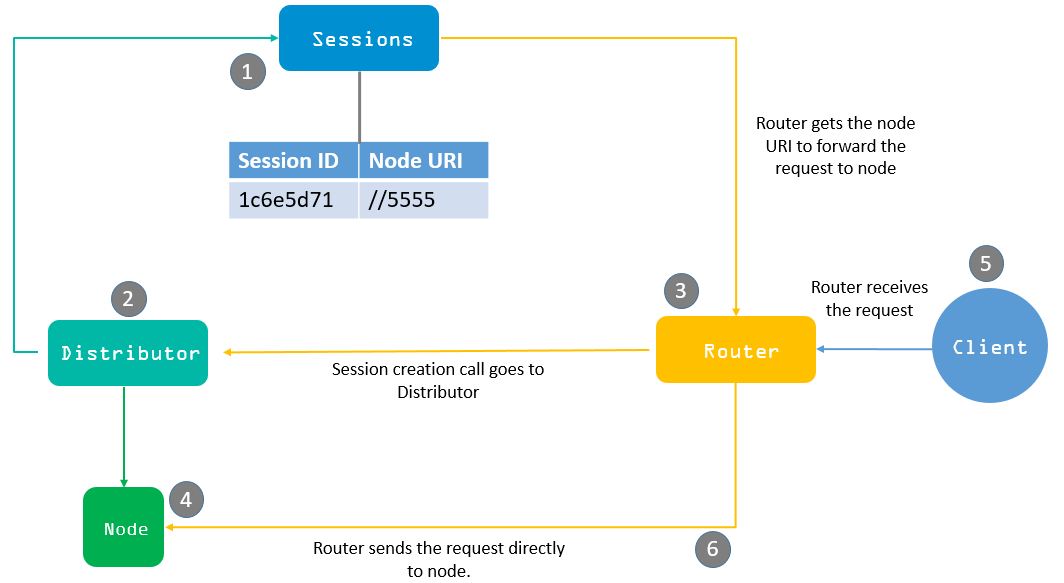
In the older version of Selenium Grid, these processes occur inside the Hub process. Hence we are not aware of the process which happens at the backdrop. Though the setup is complex. Modernization will help us to troubleshoot failures and we can set up our own distributed execution elegantly.

by Mollie Brown | Feb 28, 2022 | Selenium Testing, Blog |
Even though automation is a great asset that can greatly reduce the efforts needed in software testing, it has to be used properly to reap all its benefits. There are various instances where software testing companies have tried to implement automation in their various projects and failed due to various complications. On the other hand, we’ve followed the test automation best practices in all our automation projects and have witnessed tremendous success. By doing so, we have been able to focus on aspects such as exploratory testing to unearth hidden bugs instead of focusing on repetitive tasks. So these test automation best practices can help you reduce the time needed to reach the market, increase outcome precision, avoid human error and eventually assure maximum product quality.
Decide which tests to Automate:
Similarly, it is also not recommended to automate every single test that can be automated. Apart from that, certain types of testing like exploratory testing and accessibility testing need manual efforts for it to be successful. Trying to use automation there will not result in the loss of time and effort, it will also reduce the overall quality of the product that you are testing.
So deciding which tests have to be automated plays an important role in achieving successful and efficient test automation. As a leading automation testing company, we usually follow the set of guidelines listed below for making this decision.
The type of tests that would benefit from automation.
- Repetitive tests that demand a lot of manual effort.
- Tests that are prone to human errors.
- Tests that should be executed on multiple platforms, hardware, or OS setups.
- Constant tests that will not undergo frequent changes.
- Tests that have to cover numerous builds or versions.
- Heavy tests that require numerous data sets and large amounts of data to execute.
- Tests that utilize frequently used functions.
Identify an Automation Testing Framework:
The next automation testing best practice involves identifying and choosing the right testing framework for your needs from the long list of automation testing frameworks that are available in the market. The framework you choose should be suitable for the technology that will be used to develop the app and the intended platforms that you are planning to run the tests on. It should also align with your testing strategy and goals. The cost of the automation framework is also a crucial factor to consider. The open-source options do have an edge over the commercial tools in terms of pricing and the constant improvements that happen due to various community contributors.
Pick the Right Automation Testing Tool:
Using the right automation testing tools is one of the test automation best practices as it will definitely have a huge impact on the success rate of your automation. So be clear as to what your need is and identify a list of tools that you could use and then choose the right tool for you. Since there are a lot of open-source automation tools, proper R&D will be needed before you directly implement a tool in a project without much knowledge. Here are a few factors to consider when choosing the right automation tool for your needs.
- The type of application being tested is the first focus point. If you have to test a web-based app, you can opt for Selenium for automation as it is one of the most popular web app automation testing tools. Likewise, if you are looking to test a mobile app, you can choose Appium to fulfill all your automation needs with the least effort.
- If choosing the right automation tool for your needs is crucial, so is choosing the automation tool that will suit your testing team. The most well-known languages utilized for automation testing are Java, JavaScript, Ruby, C#, and so on. Based on the language your team is comfortable with, you can pick the automation tools.
- The cost will definitely be a deciding factor as not all will have the provision to opt for commercial solutions. So you should also consider the financial plan and requirements before choosing the automation tool for your project. Selenium and -Appium are some of the best examples of open-source automation testing tools.
Execution Plan:
Once you have the right automation framework and tools, developing an effective execution plan is the next challenge. So let’s focus on the process to create an execution plan that defines all the everyday tasks and methods related to automation.
- The test cases have to be executed using pipelines like TEXTJenkins, TeamCity, Bamboo, and so on. By doing so, you will ensure that regression tests will either run as a component of a build/deployment event or at a time of your choice.
- Parallel text execution is a great approach that can enable the input from the regression tests to reach the development team as quickly as possible.
- Though you can never test a product excessively, the combination of effective test automation, solid test cases, and planned/controlled execution will assure constructive outcomes.
Allocate tasks based on skill:
Allocating tasks based on your team’s skill set is also a part and parcel of your execution plan. So allocating test cases and tasks based on their technical skill is also one of the test automation best practices. As stated earlier, 100% automation is not possible. You might have a team member who is excellent when it comes to automation. But if you assign a manual task to that person, you will be wasting a lot of potential. Likewise, the resource might have to be fluent with a certain automation tool to perform the tests. So ensure that the resource you are allocating the task to has the skills to handle it.
As a pioneer in the software testing industry, we always make sure to have a well-balanced software testing team that can handle any type of challenge. But allocating the tasks alone isn’t enough as the team members should be clear of their goals and objectives to perform as expected. So make sure that you define the need clearly to your entire team.
Release Control:
No matter how well your pipeline is developed, there will come a moment where the group needs to decide if they should deliver a build or not. Though parts of this decision-making can be automated, various parts of it will definitely require human intervention. So it goes without saying that the release control should be a seamless blend of both algorithm results and manual decision making.
- Since the outcome of the automation tests is integral to the delivery choice, you can either opt to release if all the regression tests pass or have an experienced tester endorse the outcome before release.
- Include the application logs of all the regression test cases that have been executed as a factor when deciding to release. But make sure that your regression tests have great test coverage as those logs will reveal blunders that go beyond just the UI issues.
Failure Analysis:
Finally, in this list of the test automation best practices, we will be exploring failure analysis. Since test cases are prone to failure, you must analyze the failing test cases and identify the root cause behind their failures. You should also make the necessary arrangements to resolve the detected bugs and issues. By doing so you will be able to greatly reduce the time it takes to fix the bugs once they have been identified by the testers. So by having a clear-cut cycle, you can prevent unnecessary arguments and have them focus on fixing the issues by using all their resources.
Conclusion:
We hope you have found this blog to be informative and encourage you to implement these test automation best practices in your projects as well. Though different automation projects might have their own unique challenges, these test automation best practices are a great place to start. Being a top automation testing company, we understand that it is not just being the first to the market. Rather, it is about using automation to enhance product quality.

by Chris Adams | Oct 8, 2024 | Selenium Testing, Blog |
Selenium is a free and open-source testing tool that automates website testing. It is not a single tool, but rather a set of four components known as Selenium IDE, Selenium RC, Selenium WebDriver, and Selenium Grid. Selenium offers a number of features to testers as it provides support for multiple browsers, parallel testing capabilities, and execution on multiple machines. Since it is one of the best automation solutions in the market, we, as a leading QA company have created this blog by compiling the best Selenium commands (Inclusive of Selenium 4) one would have to know to achieve successful automation.
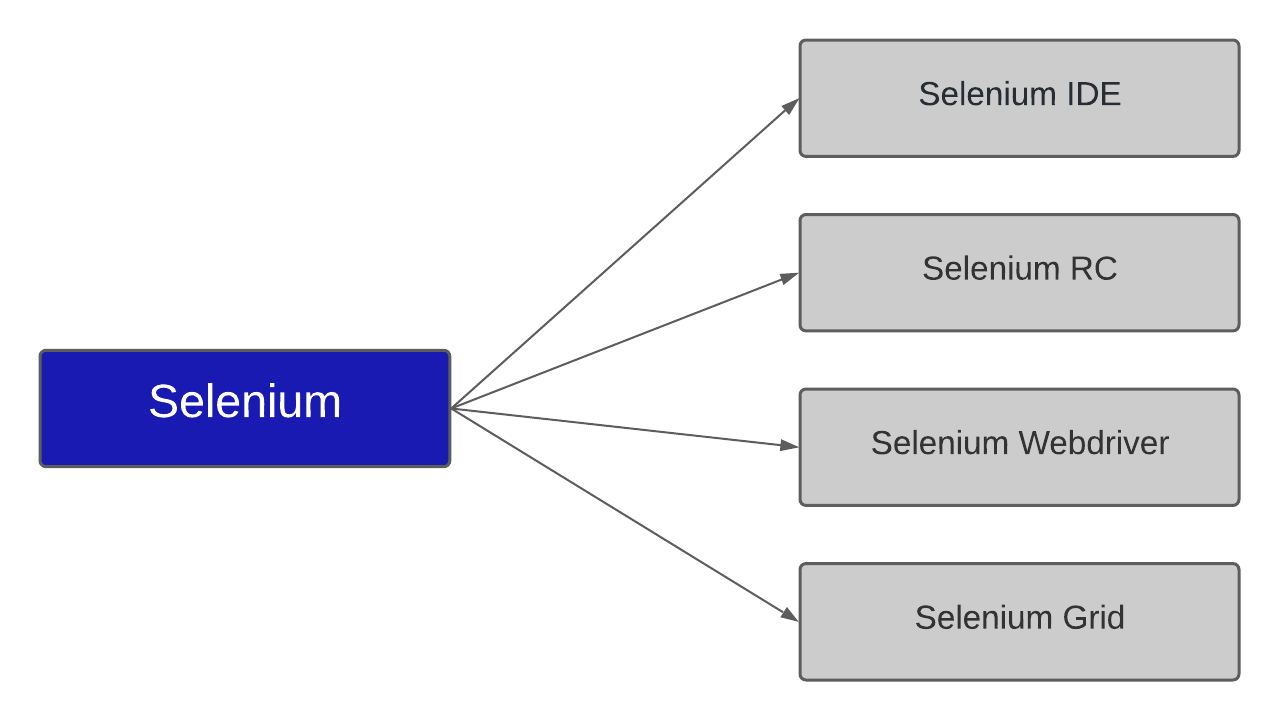
The Advantages of Selenium WebDriver
- Selenium WebDriver is compatible with prominent programming languages such as Java, C#, PHP, Ruby, Perl, Python, and.Net.
- It supports cross-browser interoperability which allows you to test on a variety of browsers including Firefox, Chrome, Edge, and Safari.
- Tests can be run on all major operating systems such as Windows, Mac, Linux, Android, and iOS.
- Selenium WebDriver overcomes Selenium v1’s limitations such as file upload, download, pop-ups, and dialogue barriers.
The Disadvantages of Selenium WebDriver
- Despite the many disadvantages, it is not possible to generate detailed test reports.
- It is also not possible to test images.
Types of Selenium WebDriver Commands
Selenium WebDriver commands are the methods used to run Selenium test automation scripts. The Selenium WebDriver commands offer different ways to interact with the WebDriver and perform various tasks. These methods are accessed by using a driver variable and calling “driver.methodName().” Let’s first list out the different categories of the Selenium WebDriver commands and then explore how to use them in the different browsers.
Browser Initialization
So we’re starting the list of the best Selenium Commands with the one that is used to initialize a browser by helping us choose the browser we want to use for automating the script. The commonly used Selenium commands for browser initialization are,
Mozilla Firefox Syntax
System.setProperty("webdriver.gecko.driver”,”//driver- location/geckodriver.exe");
WebDriver driver = new FirefoxDriver();
Google Chrome Syntax
System.setProperty(“webdriver.chrome.driver”,”//driver-location/chromedriver.exe”);
WebDriver driver=new ChromeDriver();
Edge Syntax
System.setProperty(“webdriver.edge.driver”,” //driver-location/edgedriver.exe”);
WebDriver driver=new EdgeDriver ();
Browser Commands
Now that the browser has been initialized, the next course of action will be to perform operations such as opening, closing, retrieving page source, and so on. So let’s take a look at the various browser commands that can be used to achieve all this.
get(String args)
The above Selenium command launches a new browser window and navigates to the specified URL. The command accepts a single string type parameter, which is usually the URL of the application under test. If you are a user of Selenium IDE, you may notice that the command is similar to the IDE open command.
Syntax:
driver.get("http://www.codoid.com");
getCurrentUrl()
As the name suggests, this Selenium command gives us the URL of the page currently loaded in the browser.
Syntax:
String url = driver.getCurrentUrl();
getTitle()
If you want to retrieve the title of the currently opened web page, you can use the above command.
Syntax:
String j = driver.getTitle();
getPageSource()
The above command will help you to get the source of the last loaded page and also to verify if a particular content is present or not by using the contains method.
Syntax:
String j=driver.getPageSource();
boolean result = driver.getPageSource().contains("String to find");
getClass()
If you’re looking to return the run time class name of the object, you can use the above command to get it done.
Syntax:
navigate().to()
It creates a new browser window with a new web page. It takes a String parameter and returns a void value.
Syntax:
driver.navigate().to(“http://google.com”);
refresh()
If you want to test by seeing how the page reacts to being refreshed, you can use the above command to refresh the current window.
Syntax:
driver.navigate().refresh();
back()
Back is a commonly used navigation action that you can achieve by using this command to go back to the previous page that you visited.
Syntax:
driver.navigate().back();
forward()
Similar to back, the forward action is also a widely used navigation action. So you can use the above command to redirect to the page you were in before clicking on the back button.
Syntax:
driver.navigate().forward ();
close()
The close() command is used to close the currently open WebDriver-controlled browser window. If the current window is the only active window in WebDriver, the browser will also be closed.
Syntax:
quit()
There is a minor distinction between the quit() and close() methods. The quit() method terminates all open browser instances, whereas the close() method terminates only the current browser instance.
Syntax:
Web Elements Commands
So now we know how to open the browser and perform various browser actions, let’s progress to the Selenium commands that can be used to identify and perform actions on WebElements like text boxes, radio buttons, checkboxes, and so on. WebElements are integral to automating test scripts.
Text Box Commands
click()
We start the list with click() as it helps us to click the textbox initially.
Syntax:
driver.findElement(By.xpath("//div//input[@id='search']")).click();
sendKeys()
Entering text in a text box is one of the basic functionalities and you can do so by using this command.
Syntax:
driver.findElement(By.xpath("//input[@id='id_q']")).sendKeys("fresher");
clear()
If you enter text, you’ll also have to clear it at times. You can clear the value in a textbox by using the above command.
Syntax:
driver.findElement(By.xpath("//input[@id='search']")).clear();
getLocation()
You can employ the above command to determine the relative position of an element on a web page. You can either use it to get a location of a particular element or to access the textbox area using the coordinates.
(i)To get the location of a particular element
org.openqa.selenium.Point location;
location=driver.findElement(By.xpath("//input[@id='search']")).getLocation();
(ii)Through org.openqa.selenium.Point we can access the textbox area using coordinates
action.moveByOffset(location.x,location.y).click().sendKeys("romeo").perform();
getSize()
If you’re in need of retrieving the height and width (i.e) the dimensions of an object, you can use the above command.
Syntax:
Dimension dimension=driver.findElement(By.id("GmailAddress")).getSize();
System.out.println("Height of webelement--->"+dimension.height);
System.out.println("Height of webelement--->"+dimension.width);
getAttribute()
You can use the above command to view the value type in a search text box.
Syntax:
StringfieldValue=driver.findElement(By.xpath(“XPATHVALUE")).getAttribute(“Attributevalue");
getText()
If you’re looking to retrieve the inner text of a particular web element that is not hidden by CSS, this command can be used.
Syntax:
System.out.print(driver.findElement(By.xpath(“XPATHVALUE”)).getText());
Radio Buttons and Check Boxes are the next web elements that we are going to see the Selenium commands for.
click()
The click() command can be used to click the radio button or check box.
Syntax:
driver.findElement(By.xpath("XPATH")).click();
isSelected()
If you’re looking to verify if they have been selected or not, you can make use of this command.
Syntax:
isDisplayed()
You can even verify if these web elements are visible or not using the above command.
Syntax:
isEnabled()
The isEnabled() command can be used to check whether the web elements are enabled or not.
Syntax:
getTagName()
You can use the above command to return the tag name of these web elements.
Syntax:
getText()
If you’d like to return the inner text, you can opt to use the above command.
Syntax:
String str=element.getText();
The Dropdown Box and Button Commands can be used to perform operations on the Dropdown so that we’ll be able to automate the process of selecting the required field from the dropdown.
Select class
The select class can be used to work with the dropdown elements as you’ll be able to choose the option using the various Selenium commands.
Syntax:
Select sel=new Select(driver.findElement(By.xpath("XPATHVALUE")));
sel.selectByIndex(INDEX_VALUE);
sel.selectByValue("VALUE");
sel.selectByVisibleText("VISIBLE_TEXT_VALUE");
getOptions()
If you would like to know the number of options in a dropdown, you can use this command.
Syntax:
int count=sel.getOptions().size();
getFirstSelectedOption()
You can return the first selected value using the above command.
Syntax:
String str=sel.getFirstSelectedOption().getText();
getAllSelectedOptions()
But, if you want to return a number of selected options, you’ll have to use this option.
Syntax:
int count=sel.getAllSelectedOptions().size();
isMultiple()
But what if the dropdown isn’t made for multiple options? So the isMultiple() command will come in handy as it returns true if the element supports multiple selecting options at the same time.
Syntax:
Boolean boolean=sel.isMultiple();
Deselect the options
You can even deselect the options you have selected using the above command.
Syntax:
sel.deselectAll();
sel.deselectByIndex(INDEX_VALUE);
sel.deselectByValue("VALUE");
sel.deselectByVisibleText("VISIBLE_TEXT_VALUE");
click()
The click() command can be used to click the element.
Syntax:
driver.findElement(By.xpath("XPATHVALUE")).click();
submit()
Finally, you should be able to automate the action of submitting the form using this command.
Syntax:
driver.findElement(By.xpath("XPATHVALUE")).submit();
Windows Commands
So the next step in attaining effective automation would be to automate the actions across different windows of the browser. So let’s find out how to switch to another window, pass the driver instance to another window.
Note: In order to switch to another window, we have to first identify the tab we want to switch to.
Syntax:
driver.switchTo().window(driver.getWindowHandles().toArray()[].toString();
getWindowHandle()
You can obtain the name of the current window by using this command as it will return the alphanumeric name of the current window.
Syntax:
String handle= driver.getWindowHandle();
getWindowHandles()
If there are multiple windows open and you want to retrieve the names of numerous window handles, you can utilize this command.
Syntax:
Set<String> handle= driver.getWindowHandles();
size()
You can even find out how many windows are currently open using this command.
Syntax:
int count=driver.getWindowHandles().size();
alert()
The above command can be used to switch to the alert window.
Syntax:
driver.switchTo().alert();
accept()
You can use this command with the previous command to switch to the alert window and accept the alert.
Syntax:
driver.switchTo().alert().accept();
sendKeys(String stringToSend)
If you’re looking to enter a specified string pattern into the alert box, you can use this command.
Syntax:
driver.switchTo().alert().sendkeys(String);
getText()
You can even retrieve the string content of the alert by using the above Selenium command.
Syntax:
String str=driver.switchTo().alert().getText();
ScreenShot
Taking a screenshot is a crucial part of the automation process and you can achieve it by using this command.
Syntax:
WebDriver driver = new FirefoxDriver();
driver.get("http://www.google.com/");
File scrFile = ((TakesScreenshot)driver).getScreenshotAs(OutputType.FILE);
FileUtils.copyFile(scrFile, new File("c:\\tmp\\screenshot.png"));
Frames Commands
Frames Commands are those that can be used to perform operations on the frames as it helps us to switch from one frame to another and also perform actions on the particular frames.
switchTo()
As the name suggests, you can use the above command to switch to another frame.
Syntax:
river.switchTo().frame(FRAME_INDEX);
driver.switchTo().frame(FRAME_NAME);
defaultContent()
If you would like to go back to the current window from any frame, you can employ this command.
Syntax:
driver.switchTo().defaultContent();
parentFrame()
When it comes to switching to the parent frame, you can use the above command.
Syntax:
driver.switchTo().parentFrame();
Iframe
The above command can be used to switch to an iframe.
Syntax:
driver.switchTo().frame(driver.findElements(By.tagName(“iframe”).get(FRAME_INDEX));
Actions Commands
In general, the methods of the actions classes are divided into two categories:
- Mouse-Controlled Actions
- Actions on the Keyboard
The Actions class has a number of methods that will return an action object unless otherwise specified. Mimicking a real user’s actions is impossible to do without automating the mouse and keyboard actions. So let’s take a look at how to do it.
build()
The build() is a very important command that can be used to generate a chain of actions that you want to perform.
Syntax:
Actions action = new Actions(driver);
WebElement e= webdriver.findElement(By.linkText(“XPATH"));
action.moveToElement(e).moveToElement(driver.findElement(By.xpath(“XPATHVALUE"))).click().build().perform();
click()
This command is used to click at the current mouse location.
Syntax:
Actions action = new Actions(driver);
action.moveToElement(element).click().perform();
clickAndHold()
If you would like to click and hold on to it at the current mouse location, you can do so using this command.
Syntax:
contextClick(WebElement onElement)
Context-click is nothing but clicking the right mouse button at the current location.
Syntax:
Actions action= new Actions(driver);
action.contextClick(productLink).build().perform();
release()
If you hold on to the click, you’d have to release it at some point and you can do so by using this command as it releases the depressed left mouse button at the current mouse location.
Syntax:
Actions builder = new Actions(driver);
WebElement canvas = driver.findElement(By.id("tutorial"));
Action dragAndDrop = builder.clickAndHold(canvas).moveByOffset(100, 150).release(canvas).build().perform();
doubleClick()
Another common mouse action is the double-clicking process and you can perform that by using this command.
Syntax:
Actions builder = new Actions(driver);
WebElement canvas = driver.findElement(By.id("tutorial"));
Action dragAndDrop = builder.clickAndHold(canvas).moveByOffset(100, 150).release(canvas).build().perform();
dragAndDrop(WebElement source, WebElement target)
Drag and drop is performed by clicking and holding the source element and then moving to the target location to release it. You can achieve this by using the above command.
Syntax:
Actions action= new Actions(driver);
WebElement Source=driver.findElement(By.id("draggable"));
WebElement Target=driver.findElement(By.id("droppable"));
act.dragAndDrop(Source, Target).build().perform();
dragAndDropBy(WebElement source, int xOffset, int yOffset)
This command is similar to the regular drag and drop, but it differs in the way that the movement happens with reference to a defined offset.
Syntax:
act.dragAndDropBy(From, 140, 18).perform();
here 140,8 are the x and y offset of target element.
moveByOffset(int xOffset, int yOffset)
You can offset the mouse’s position by either keeping the current position or (0,0) as the reference.
Syntax:
Actions builder = new Actions(driver);
WebElement canvas = driver.findElement(By.id("tutorial"));
Action dragAndDrop = builder.clickAndHold(canvas).moveByOffset(100, 150).release(canvas).build().perform();
moveToElement(WebElement toElement)
You can even move the mouse to the middle of a web element by using this command.
Syntax:
Actions action = new Actions(driver);
action.moveToElement(driver.findElement(By.xpath("XPATHVALUE").click().build().perform();
moveToElement(WebElement toElement, int xOffset, int yOffset)
You can use the above command to move the mouse to an offset from the top-left corner of the element.
Syntax:
Actions builder = new Actions(driver);
builder.moveToElement(knownElement, 10, 25).click().build().perform();
perform()
You can perform the actions without having to call the build() command first.
Syntax:
Actions action = new Actions(driver);
action.moveToElement(element).click().perform();
keyDown(),keyUp()
The above Selenium commands can be used to perform single key presses and key releases.
Syntax:
Actions action = new Actions(driver);
action.keyDown(Keys.control).sendKeys("a").keyUp(Keys.control).
sendKeys(Keys.DELETE).perform();
Synchronization Commands
We’re almost done with all the respective Selenium commands that one will need to complete their automation. Imagine an action such as a page reloads or a form was submitted, the script would have to wait for a certain amount of time to ensure the action has been completed. That is where the Selenium commands for Synchronization come into play.
Thread.sleep():
This command is used to pause for a defined time. Time is defined in milliseconds for this method.
Syntax:
implicitlyWait()
By using the above command, the script execution will wait for a specified amount of time before it moves on to the next step.
Syntax:
driver.manage().timeouts().implicitlyWait(15, TimeUnit.SECONDS);
ExplicitWait
But since setting a specified amount of time for every single command is not that efficient, you can make use of this command to be adaptable by waiting for certain conditions to be satisfied. This can be achieved by using different types of ExpectedConditions.
Syntax:
WebDriverWait wait = new WebDriverWait(driver, 10);
WebElementele=wait.until(ExpectedConditions.elementToBeClickable(By.id(“XPATH")));
Note: WebDriver Wait statements can be very useful for effective scripting as we can avoid using the Thread.sleep() Selenium commands.
Now let’s explore the various expected conditions.
visibilityOfElementLocated()
You can wait until an element to be located becomes visible using this command.
Syntax:
wait.until(ExpectedConditions.visibilityOfElementLocated(By.id(“XPATH VALUE"));
elementToBeClickable()
This command can be used to wait for an element to become visible and clickable.
Syntax:
wait.until(ExpectedConditions.elementToBeClickable(By.xpath(“/XPATH VALUE”)));
textToBePresentInElement()
By using this command, you’ll be able to make the execution wait until an element has a certain string pattern.
Syntax:
wait.until(ExpectedConditions.textToBePresentInElement(By.xpath( XPATH VALUE”), “text to be found”));
alertIsPresent()
If you want the execution to wait until an alert box appears, you can use this command.
Syntax:
wait.until(ExpectedConditions.alertIsPresent()) !=null);
titleIs()
You can even wait for a page with a specific title using this command.
Syntax:
wait.until(ExpectedConditions.titleIs(“gmail”));
frameToBeAvailableAndSwitchToIt()
The above command can be used to wait for a frame to become available and for the control to switch automatically.
Syntax:
wait.until(ExpectedConditions.frameToBeAvailableAndSwitchToIt(By.id(“XPATH VALUE”)));
FluentWait()
This command allows you to control two important aspects
(i) The maximum amount of time to wait for a condition to be satisfied along with the frequency at which to check if the condition has been satisfied or not.
(ii) You can even configure the command to ignore specific types of exceptions whilst waiting.
Syntax:
Wait wait = new FluentWait(driver);
withTimeout(30, SECONDS);
pollingEvery(5, SECONDS);
ignoring(NoSuchElementException.class);
Selenium 4 Commands
So all the above Selenium commands that we saw were from Selenium 3. Now, with the launch of Selenium 4, some more commands have been added and some changes have also been implemented to the Selenium 3 commands. Since we are focused on providing the best Selenium testing services to all our clients, we are always on a path of continuous learning. So let’s take a look at all the major changes one by one.
Relative Locators
There were no techniques (or particular methods) in Selenium 3 to locate Web Elements relative to the surrounding components. But relative locators have been introduced in Selenium 4 to make it easier to locate Web Elements based on their visual placement on the UI relative to other DOM elements.
above()
This command is used to identify the required web element that is just above the specified element.
Syntax:
WebElement ele1;
ele1 = driver.findElement(By.id("123"));
driver.findElement(withTagName("ABC").above(ele1)).getText();
below()
Likewise, to identify the required web element just below the specified element, the above command can be used.
Syntax:
WebElement ele1;
ele1 = driver.findElement(By.id("123"));
String ele2 = driver.findElement(withTagName("AYZ").below(ele1)).getText();
toLeftOf()
Similarly, this command can be used to identify the required web element to the left of the specified element.
Syntax:
driver.findElement( withTagName("ABC").toLeftOf(ele1)).getText();
toRightOf()
Finally, the above command can be used to identify the required web element to the right of the specified element.
Syntax:
driver.findElement( withTagName("ABC"). toRightOf (ele1)).getText();
near()
You can even identify required web elements that are about mexa piles away from the specified element.
Syntax:
driver.findElement( withTagName("ABC"). near(ele1)).getText();
Window and Tab management
It is very common for a link to open in a new tab or window based on the link you click or how you open it. We had to use the switch operation and the windowHandle function in Selenium 3 to handle it. But Selenium 4 now includes a new API called newWindow, which allows users to create and switch between new windows/tabs without having to build a new WebDriver object.
Syntax:
driver.get("https://www.flipkart.com/");
driver.switchTo().newWindow(WindowType.WINDOW);
driver.navigate().to("https://www.codoid.com/");
driver.get("https://www.flipkart.com/");
driver.switchTo().newWindow(WindowType.TAB);
driver.navigate().to("https://www.codoid.com/");
Conclusion:
We hope you have found our comprehensive list of all the prominent Selenium Commands and their syntaxes to be useful. We have also made sure to add the commands from Selenium 4 to make this a conclusive blog that captures all the needs. These are the Selenium Commands that we use in our automaton testing scripts and hope you’ll use them in your scripts too.

by admin | Feb 11, 2022 | Selenium Testing, Blog, Latest Post |
Over the years, Selenium test automation has become an integral part of quality assurance. Despite its immense popularity, many might have faced various difficulties in the form of flaky and unstable tests. But does that imply that the issue is with Selenium? Being a leading test automation services provider, we have no second thoughts in its capacity and can firmly say that everybody can get the best out of it if they follow the best practices. Though there are no specific rules for creating your Selenium test automation scripts, these Selenium best practices will definitely act as effective guidelines. So in this blog, we have listed the Selenium best practices that one can follow to enhance the efficiency of their Selenium Test Automation.
Know Which Tests Should Be Automated
It is a well-known fact that 100% automation isn’t possible. So trying to automate every single scenario or automating every scenario that can be automated is not the best approach. So before you kickstart your automated browser testing, make sure you are clear of what tests have to be automated. When it comes to automation, always keep in mind that just because you can do something doesn’t mean that you should do it.
So start off by designing effective test cases before you start working on automation. Apart from that, analyzing if automating a scenario will result in the reduction of repetitive and tedious tasks is also crucial. So if you automate a test case that doesn’t have much frequency of occurrence, then spending that much time and effort on automating the test case is not validated. So as a first step, look for static test cases that have predictable outputs.
Choose the Best Locators
Since Selenium has a wide range of web locators available, choosing the best locators can impact the quality of your Selenium test automation. Some of the most often used web locators in Selenium WebDriver are
- ID
- Class
- tagName
- Name
- Link text
- XPath
- CSS Selector
- DOM Locator, and so on.
It’s important to pick the proper one as it will reduce the impact of user interface changes during testing. For example, if there is a dynamic scenario, link text will generally be preferable. But if you are looking for web locators that are less brittle, ID, Class, or Name would be the way to go even though it isn’t that user-friendly.
To learn more about the many ways to locate web elements and to know which locators are most suited for specific scenarios, read our blog about the different XPath methods in Selenium.
Utilize time-efficient approaches
It is not always about getting the script to work as your test scripts should also be efficient when executed. What might feel like just a few seconds will definitely have huge impacts when you have to execute the tests numerous times in different combinations. That is why we have incorporated the following Selenium best practices that will help you save loads of time.
Use Selenium Wait Commands Instead of Thread.sleep()
Various factors like network slowness or server issues can cause your web application to take additional time to load. So your automation scripts should be able to wait for all the elements to load before starting the test execution.
The Thread.sleep() method can be used for this purpose as it can pause your script for a specific amount of time.
Sleep
Sleep() waits for the number of seconds supplied in the brackets, regardless of whether the working page is ready.
There is a major flaw with this function as the script will wait for a fixed time for every scenario irrespective of the need. For example, let’s assume that you have set the sleep time to be 6 seconds. But what if the webpage that has to be tested loads in just 3 seconds? Or what if the webpage took 7 seconds to load? You will either be wasting time or getting inaccurate results because of this approach. But you can prevent such issues by utilizing implicit or explicit waits.
Wait
Explicit: The code execution is halted until a certain condition is satisfied.
Packages to import to use the Explicit wait
import org.openqa.selenium.support.ui.ExpectedConditions
import org.openqa.selenium.support.ui.WebDriverWait
Code to initialize a Wait Object using WebDriverWait Class
WebDriverWait wait = new WebDriverWait(driver,10);
Here WebDriverWait is the class, and new is the reference variable. It will either for the defined amount or for the expected condition to be fulfilled. This is just a sample and you can use the same concept with the other available expected conditions. Though there are various options, we have listed a few below,
- visibilityOf()
- alertIsPresent()
- titleContains()
- textToBePresentInElement()
- invisibilityOfTheElementLocated()
- elementSelectionStateToBe()
- elementToBeClickable()
- presenceOfAllElementsLocatedBy()
- frameToBeAvaliableAndSwitchToIt()
Example:
wait.until(ExpectedConditions.visibilityOfElementLocated(By.xpath("//div[contains(text(),CODOID)]")));
By now you would have understood why we have included the usage of the wait commands in our list of Selenium best practices. Beyond the explicit wait, there are also implicit and fluent wait commands that give you more options. So let’s explore them now.
Implicit: The WebDriver is advised to keep polling the DOM until the element search is complete. By default, the time is set to 0.
Syntax
driver.manage().timeouts().implicitlyWait(10, TimeUnit.SECONDS);
Fluent: It waits for a specified maximum amount of time for a specific condition. What makes it different is that it will validate the element at regular intervals before throwing “ElementNotVisibleException”.
Syntax
Wait wait = new FluentWait(Webdriver_Reference)
.withTimout(timeOut, SECONDS)
.pollingEvery(timeOut, SECONDS)
.Ignoring(Exception class)
Sample Snippet
We have mentioned a sampe snippet that will wait for 30 seconds and check the condition every 5 seconds.
FluentWait wait = new FluentWait(driver);
.withTimeout(30, TimeUnit.SECONDS)
.pollingEvery(5, TimeUnit.SECONDS)
.ignoring(NoSuchElementException.class);
WebElement element = wait.until(new Function<WebDriver, WebElement) {
public WebElement apply(WebDriver driver) {
return driver.findElement(By.id("element"));
}
});
Implicit: The WebDriver is advised to keep polling the DOM until the element search is complete. By default, the time is set to 0.
Use Assert and Verify-in Appropriate Scenarios
Let’s assume that there is a task to transport 100 boxes of apples to the market. But what if all the boxes of apples are rotten already? Will there be any use in putting all the effort and time to get the apple to the market only for it to go unsold? Likewise, there will be various scenarios where there are hard fails that will compromise the rest of the execution. Please keep in mind that Asserts should only be used if you want to stop the test execution when a hard failure occurs. If the assert condition is false, the execution will come to a halt, and no more tests will be run. So it is important to identify such bottlenecks and ensure that you use Asserts to save time.
If we take an e-commerce site as an example, such scenarios might come at the very beginning where a user is unable to login, or even in between where the user isn’t able to add any product to their cart. If these functionalities fail, there will be no point in testing the search functionality or payment process as it would all fail due to their dependency.
If the errors are not that critical, then you will be able to run the tests irrespective of the verify’s condition.
Increase Test Coverage
There is just no easy workaround when it comes to testing a website or an application across a variety of devices and browsers. The devices are further split based on the operating system they use as well. So let’s take a look at a few Selenium Best Practices that will help you increase the test coverage.
Browser Compatibility Matrix
Just like knowing what to automate, it is important to figure out the high-priority combinations that are used by your target audience. So create a Browser Compatibility Matrix by performing a product analysis to obtain detailed insights. Trying to perform automation testing with Selenium without narrowing down your target will not only be a cumbersome task, but it will also be a waste of time and resources.
Make use of Parallel Testing in Selenium
Though you are able to narrow down the device combinations, you will not always have the time to test everything one by one. Since Selenium’s parallel testing option is a major reason for its popularity, you can employ it not just to save time, but to also improve your test coverage in an efficient way. Almost all major test frameworks, such as PyTest, PyUnit, TestNG, Cucumber, and so on support simultaneous testing on a Selenium Grid. If you are not familiar with the concept of creating a Selenium Grid for distributed execution, make sure to read our conclusive blog.
Being the innovators we are, we even developed an open-source tool called VisGrid that will provide you with a UI to easily start a Selenium Grid, create & attach nodes, and so on.
Use many driver implementations instead of a single one
Since Selenium’s WebDrivers are not interchangeable, executing automated cross-browser tests on a local computer is not the same as running them on a continuous build server. It would be a mistake to assume that the following test will utilize Firefox WebDriver in that situation (or Chrome WebDriver or any other WebDriver).
When running integration tests in a continuous build environment, the test will only get a RemoteDriver object (i.e., WebDriver for any target browser). Using parameter notes to manage multiple browser types and prepare the code ready for simultaneous execution is one of the Selenium best practices (or parallel testing). LabelledParameterized (@Parameters in TestNG and @RunWith in JUnit) may be used to build small frameworks in Selenium.
Ease Code Maintenance
When working on automation tests with Selenium, it’s critical to pay attention to the test code’s maintainability and reusability. As one of the best test automation companies, we always make sure our scripts are easy to maintain by implementing the following Selenium best practices.
Use design principles and patterns, such as the Page Object Model
With the ever-increasing client expectations, a website’s user interface (UI) will inevitably change as new updates get introduced at regular intervals. So the locators for certain UI components will vary as well. This implies that QAs have to once again create new test cases for the same page or make numerous changes at various places of the script, which can be time-consuming.
So you can employ the Page Object Model design pattern to create test scripts and overcome this issue. In this approach, each web page is considered a class file in the design pattern, and each class file contains related web components.
This method greatly increases the reusability of the code while also making test maintenance easier. Read our complete guide to page object model in Selenium before you implement it.
Quarantine flaky tests
If a test keeps failing at random even if the code hasn’t gone through any changes, then it is called a flaky test. Since the testers can never be sure of the results, they will lose trust in the code and end up re-running the scripts, or debugging the scripts even though there might not be an actual defect. So make sure to quarantine such tests from your other tests. Once they are separated, make sure to analyze them and fix them before you bring them back to your test suite as flaky tests can disrupt your entire automation test suite with false positives and negatives.
Wrap Selenium Calls
You might be using various web locators such as XPath and ID to locate different web elements on the page. So the code that is regularly used in the implementation should be separated into its own API to reduce code duplication. By following this approach, you will be able to reduce the code size and enhance maintainability.
Use a standardized directory structure
Page Objects, Helper functions, and file(s) that include web locator information needed in test scenarios may all be found in the Src folder. The actual test implementation can be stored in the test folder.
When it comes to a directory structure for Selenium test automation, we don’t have a common guideline. Selenium best practices, on the other hand, proposes that we have a directory structure that isolates the test implementation from the test automation framework. This improves the test code’s structure.
Implement Data-Driven Testing for Parameterization
Hard coding test values in test automation scripts are extremely troublesome and not scalable in any way. But you can avoid the various disadvantages like code duplication by implementing data-driven testing by using Parameterization. It aids in the execution of test cases that have a variety of inputs (or data sets).
Naming Convention
Improper naming of your web elements in your automation script could lead to a lot of unnecessary confusion. You may not face any issues as long as you are the only person using the script, but you have to ensure that your script can be used by anybody. Effective naming eases code maintenance by also making it easier to find the web element you are looking for in your code. Now let’s see a few tips that can help you.
1. Add prefixes to the name of your web elements as shown in the below table as it describes the type of web elements being used. In addition to that, you can name the web element based on how it appears in the UI.
| S. No |
Web Element Type |
Prefix |
Example |
| 1 |
Text Box |
Txt |
TxtUsername,TxtPassword |
| 2 |
Button |
Btn |
BtnSignUp , BtnLogin |
| 3 |
Drop Down |
Dd |
DdCountry , DdYear |
| 4 |
Select Drop Down |
Sdd |
SddMonth , SddYear |
| 5 |
Check Box |
Chk |
ChkGender, ChkLanguage |
| 6 |
Header |
Hdr |
HdrName, HdrUser |
| 7 |
Table |
Tbl |
TblBooks, TblProducts |
| 8 |
Label |
Lbl |
LblUserName, LblPassword |
| 9 |
Image |
Img |
ImgProfile, ImgCart |
2. You can even add prefixes that denote the action to be performed on the web element.
Example:
| S. No |
Action |
Prefix |
Example |
| 1 |
Click |
Clk |
ClkLogin, ClkIcon |
| 2 |
Type |
Set |
SetMobileNo, SetPassword |
| 3 |
Verify |
Verify |
VerifyLogo |
| 4 |
Check A Check Box |
Chk |
ChkLanguage |
| 5 |
Select Value From Drop Down |
Select |
SelectCountry, SelectZone |
3. Likewise, you can make use of suffixes when creating action pages.
Example:
SignUpPage
LoginPage
4. To make it even clear, you can use a camel case to name the web elements.
Camel case is nothing but a typing convention like lower case and upper case in which the first letter of every word is capitalized.
Example:
If a text box has the label as “Email address”, name it as “txtEmailAddress”
Proper Documentation
Creating proper documentation for your automation tests in Selenium is as important as any of the other Selenium best practices we have discussed thus far.
Use Automated Screenshots to Analyse Failures
Automation Test Script running into failures is an eventuality. But we will not be sure if the failure is due to a defect in the Application Under Test (AUT) or if there is a problem with our code. So analyzing the cause of a test failure will be very crucial, and so taking screenshots is a best practice that can save a lot of time. Screenshots are not just great for failures as you can make use of screenshots as evidence for success.
To capture a screenshot, use the getScreenshotAs function in the following code sample.
File source = ((TakesScreenshot)driver).getScreenshotAs(OutputType.FILE);
FileUtils.copyFile(source, new File("Test Screenshot.png"));
Log and Report
Finding that one failed test case in a large test suite is like finding a needle in a haystack. So using console logs at suitable points in the test code helps us understand the issues better and zero in on the core problem.
Debug, info, warning, error, and critical are some of the common log levels that are available in most programming languages. Since adding unnecessary logs to the test implementation might cause test execution to be delayed, it is better to add logs with level errors in scenarios that enable easier tracking.
Like logging, reporting is also an important aspect of Selenium test automation as it helps determine if the test has passed or failed. You can also keep track of the progress of test suites (or test cases). This in turn helps improve the readability of the output and helps you reduce the amount of time spent maintaining test data as you can easily analyze the features and test coverage.
Set Zoom Level to 100% and Maximize the Window
Make sure to set the zoom level in your browser to 100% during your automation as it is one of the basics that should be followed regardless of which browser you opt to use. It will both provide a native mouse experience and ensure that the native mouse events are assigned to the proper coordinates.
Ensure to maximize the window as soon as the test URL is loaded as Selenium doesn’t launch the browser in the maximized mode by default.
Snippet
driver.manage().window().maximize();
Conclusion
We have seen great results by implementing these Selenium best practices in our automation testing projects and hope you will them useful in the future as well. We had listed various Selenium best practices under particular categories to enable a crystal clear understanding of how each of them impacts the testing process on the whole. So we hope you have enjoyed reading our blog and found the content to be informative as well.

by admin | Dec 7, 2021 | Selenium Testing, Blog, Latest Post |
Object locating technique is one of the fundamental when it comes to automation testing. If we test the application manually, we would interact with various objects or elements like links, buttons, radio buttons, lists, text boxes, sliders, and so on. So for us to mimic an actual user, the automation tool would also have to perform the same actions, and locating the objects that have to interact with is the first goal. Once the object is located, we can perform the desired actions like clicking on it, entering text, and so on. Selenium is one of the prominent automation testing tools and it uses the concept of ‘Locators’ to identify the elements/objects. So let’s take a look at the Different XPath Methods in Selenium as they are the building blocks of any Selenium automation script.
Steps to find elements in DOM:-
Before we head over to explore the Different XPath Methods in Selenium, let’s also look into a few basics like the ways to find elements in DOM and the different locators that exist in Selenium.
1. First and foremost, you have to open the website that you want to automate. Once it has loaded, click on the ‘F12’ key to open DevTools. As shown in the below image, click on the inspect icon to enable it and then click on the element you want to inspect.
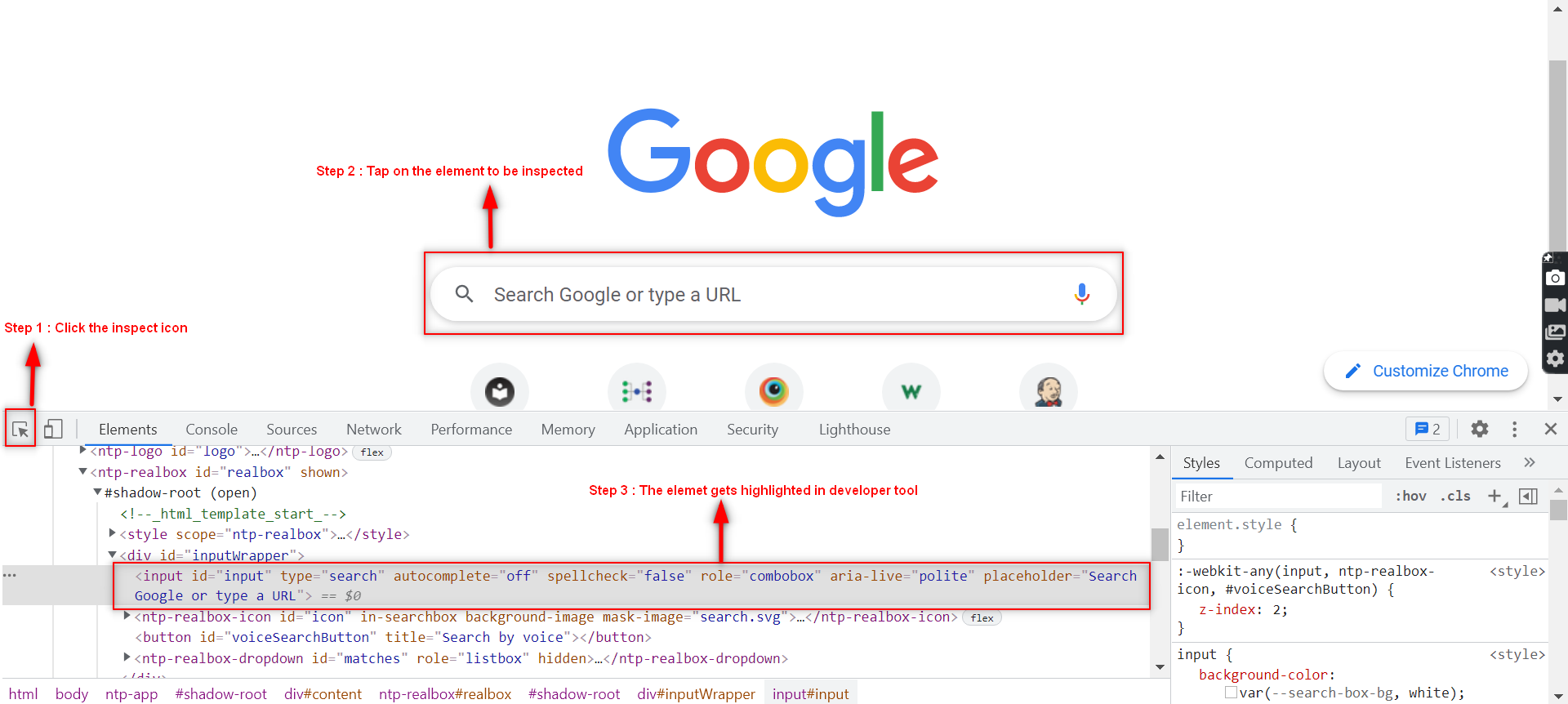
2. There are also other ways to open the developer’s tools. You can either click on the ‘Menu’ option in the browser, click on ‘More Tools’ under that, and then click on the ‘Developer tools’ option that is shown.
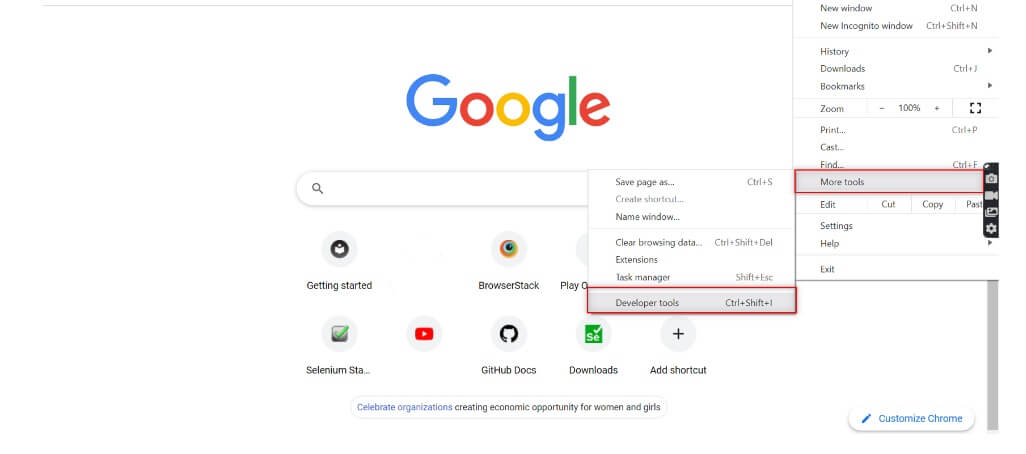
3. If not you can just right-click on the element you want to inspect and click on the ‘Inspect’ option to locate the element.
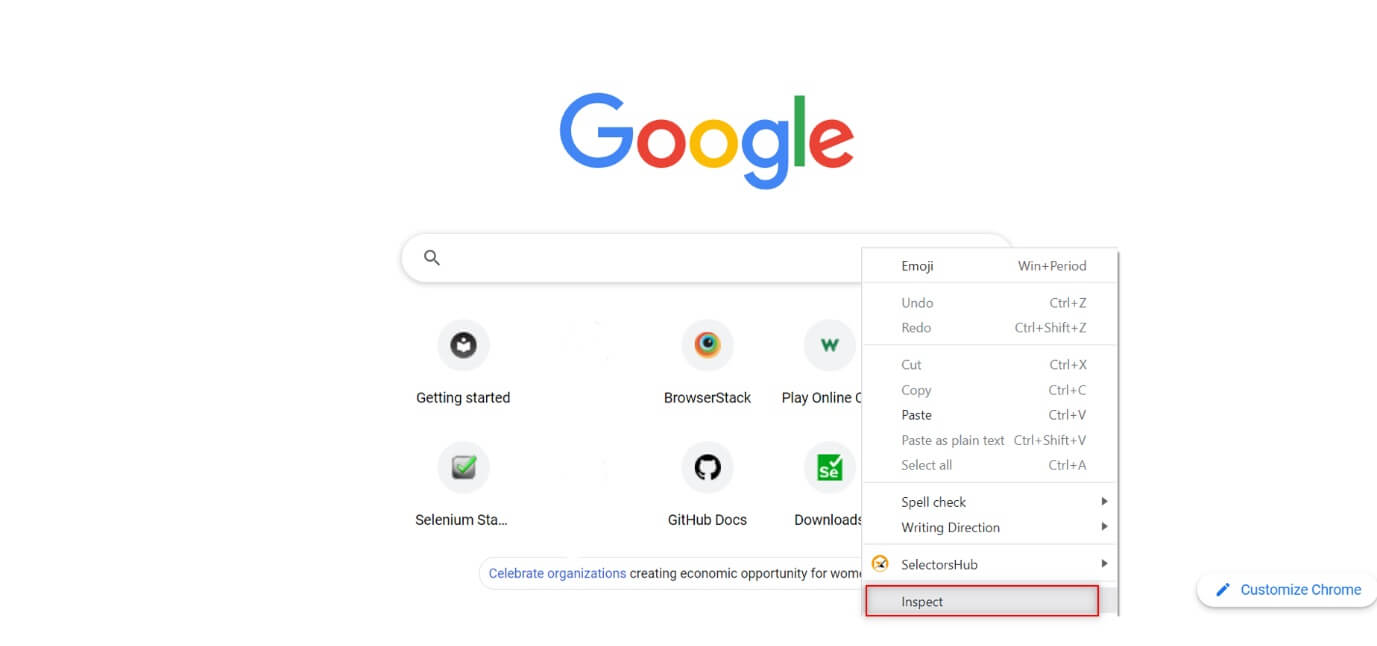
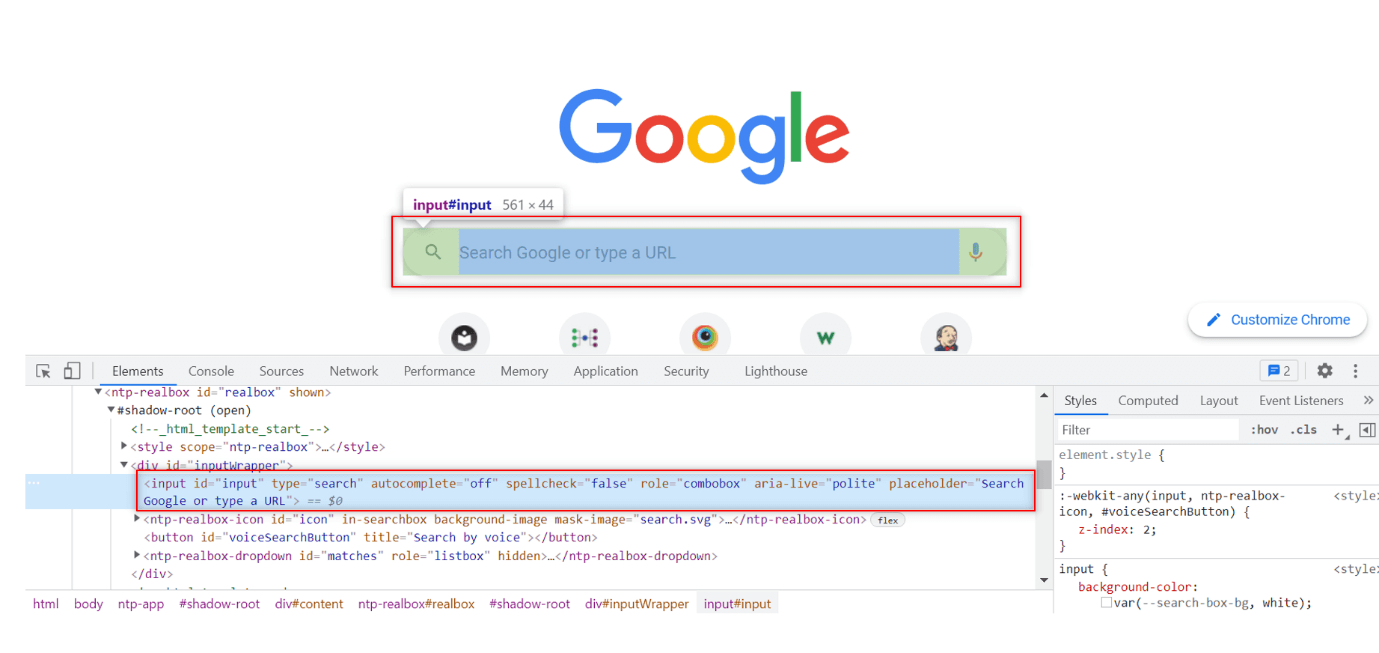
Different Types of Locators in Selenium:-
Now that we know the ways to open Developer tools in our browser, let’s take a look at the different types of locators that can be used to identify the various web elements.
- ID
- Name
- LinkText
- Partial LinkText
- CSS Selector
- Xpath
ID Locator:-
ID is the first choice for many testers as it is one of the safest and fastest locators that can be used to find the location of an element. What makes ID so effective is that it is unique for each element on the web page, making it easily identifiable. IDs are mostly account numbers, university roll numbers, usernames, passwords, and so on as they will be unique.
Name Locator:-
If you want to locate an element that doesn’t have too many elements with similar names, you could use the name locator as it is also an effective way to locate an element. If we take a form to be an example, you might have various text fields and one submit button. So locating text fields using the names can be hard. But since there is only one submit button you will be able to locate it without much confusion. If at all there are two or more elements with the same name attribute, then the first element with the value of the name attribute will be returned. If at all there are no elements that have a matching name attribute, then a NoSuchElementException will be raised.
LinkText:-
Of the Different Types of Locators in Selenium, there are two locators that can be used to locate hyperlinks on a webpage. So let’s say you want to verify if a link is working correctly on a page. You can make use of linkText to locate that hyperlink by using the exact match of the string.
Partial LinkText:-
The main distinction from the LinkText in Selenium to the Partial LinkText is that it doesn’t investigate the specific match of the string. So it will even be able to identify fractional matches. This will come in handy when you have to search hyperlinks that have a high text length.
CSS Selector:-
What if you have to locate complex elements on the page? The CSS selector will be the best choice for you. The only downside with CSS identification is that it is not supported by all browsers. But it may not be a huge concern as it is supported by all the widely used browsers like Google Chrome, Mozilla Firefox, Safari, Opera, and so on.
Xpath:-
XPath stands for XML path language. It is based on the tree model of XML documents and provides the ability to navigate around the tree by selecting nodes using a variety of criteria. Though XPath locators are reliable, they are slower in comparison to the CSS Selectors. XPath is also supported by all the major web browsers. Now, let’s take a look at the different XPath methods and their syntaxes.
The Different XPath Methods in Selenium:-
basic xpath – To select a node based on the attribute,
Syntax:
//tagname[@attribute =' value']
contains – We can use partial text to find an element,
Syntax:
//tagname[contains(@attribute,'value')]
using OR – The element will be located if any one condition or both conditions are true.
Syntax:
//tagname[@attribute='value' or @attribute ='value']
using AND – The element will be located only if both the conditions are true,
Syntax:
//tagname[@attribute='value' and @attribute ='value']
starts-with – This can be used in a webpage where the attribute value changes on refreshing the page or due to dynamic operation on the page as it will locate the element with the starting text alone,
Syntax:
//tagname[starts-with(@attribute,'value')]
text() – It is an inbuilt function used to locate the element based on the text of the element,
Syntax:
axes – Can be used to locate elements that are more complex and dynamic by following various methods like following, parent, child, and so on.
Locating Techniques:-
Knowing the Different XPath Methods in Selenium is the first step, but employing them in an effective manner to get the job done is the key. As a leading automation testing company, we make use of some of the best locating techniques that have made our job easy. So let’s explore them now.
1) To find an element using the last and position keywords
//input[@type='text'][position()=1 or position()=last()]
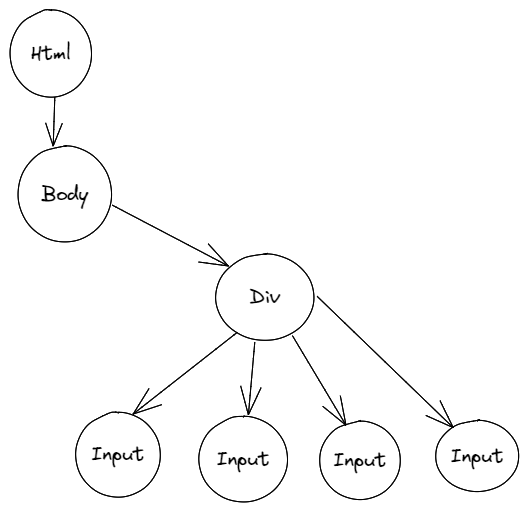
We can get the first and last element inside a div tag using the position and last keywords.
2) To locate an element with the keyword count
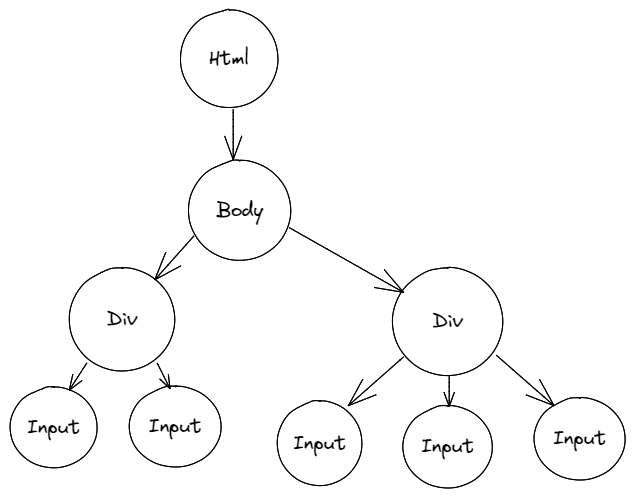
We can locate an element by the count of another element. In this example, we have located the div tag by the count of its child input tags (i.e.) 2.
3) To identify an element with the parent keyword
//input[@id='name_id']/parent::div
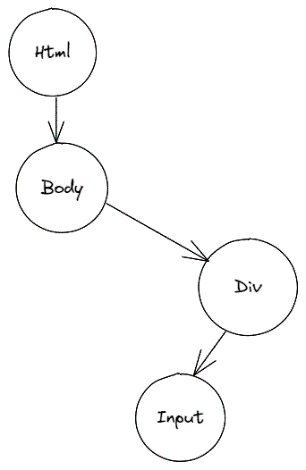
Since we can locate an element with the element of the “parent” keyword, we have located the div tag which is the parent of the input tag.
4) To locate an element with the following- sibling keyword
//input/following-sibling::input[@name='Gender']
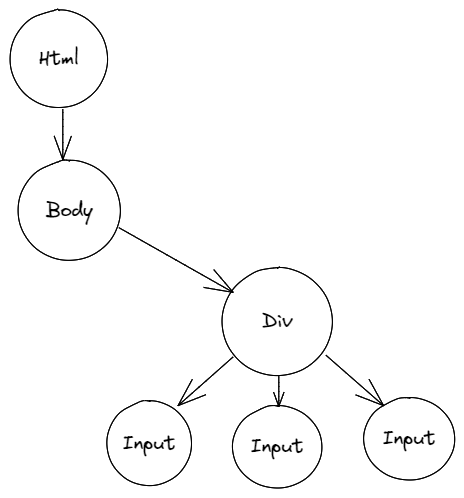
In this example, we have three input tags under a parent tag div. If you want to locate only one input tag among the three tags, we can use the following-sibling keyword to do so.
5) To identify with a single class attribute
Consider a situation where there are 4 input tags and that one input tag has a class attribute. In this case, if all the other elements for the input tags are the same, we can locate the element with the help of the Class attribute.
//div[@class='content_2']//input[@class]
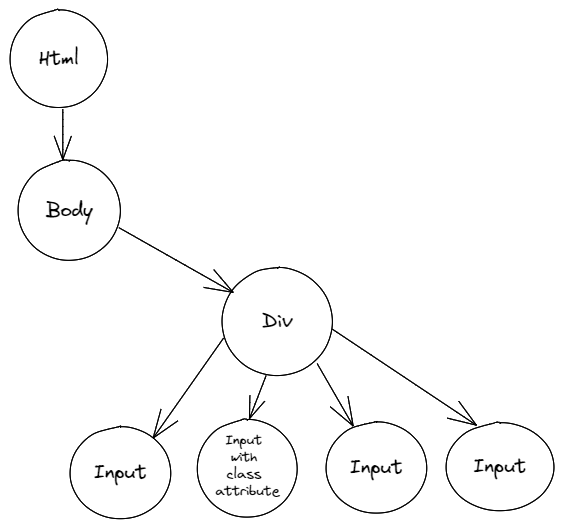
6) Odd & Even Rows in a Table
We can even locate the elements in an odd and even row of a table by using the below commands. It will work like a filter as we will get all the elements in the even/odd rows as the result.
ODD ==> table[id=table1] td:nth-child(2n+1)
Even ==> table[id=table1] td:nth-child(2n+2)
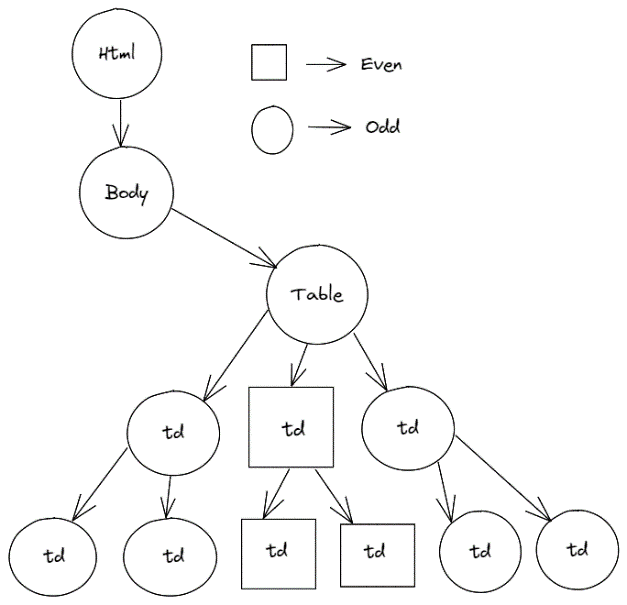
7) List of elements in a table
If you’re looking to locate a list of elements in a table by sorting them in ascending or descending orders, we can use the below technique.
//table[@id='table1']//td[3]
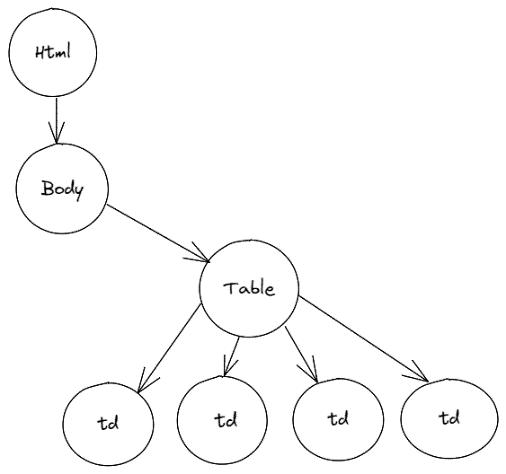
8) The Indexing Technique
If you want to select an element inside the table, you can use this indexing technique to locate the particular element.
//table[@id='table1']//td[1]//following::td[text()='Sam']
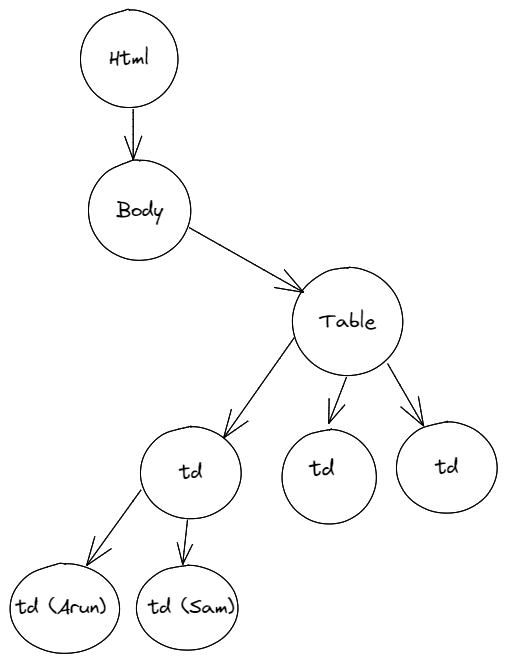
9) To locate elements based on the value
We have used an example where all the elements that have a price that is less than or equal to 2 are located.
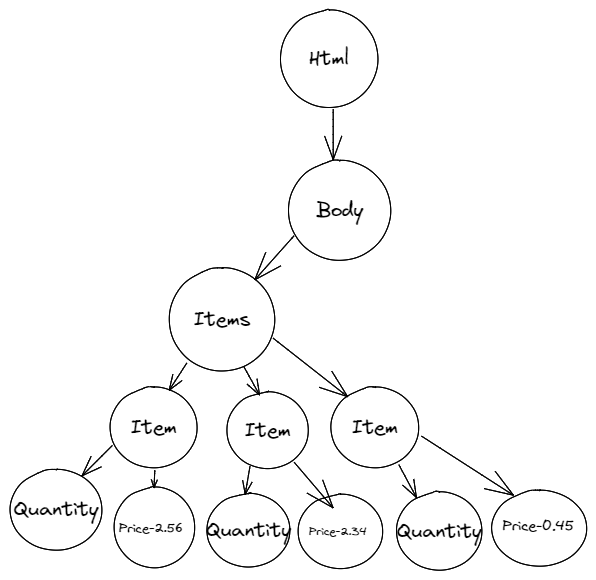
10) To verify if a checkbox has been checked or not
Say you want to pick out elements that have not yet been checked in a list of elements, you can use the below technique to isolate the type of elements you want.
input#good:checked
input#good:not(:checked)
Here, input - tag name, good - id
Conclusion
We hope you found this blog to be informative as knowing the Different XPath Methods in Selenium is one of the must-know basics of automation testing. As a leading QA company, we are always keen on the knowledge and the positive mindset that is required to create swift solutions to big problems. So gaining an in-depth understanding of the various techniques will play an instrumental role in your growth as an automation test engineer. If you are not clear, then you will have a tough time figuring out quick solutions for your automation needs.




